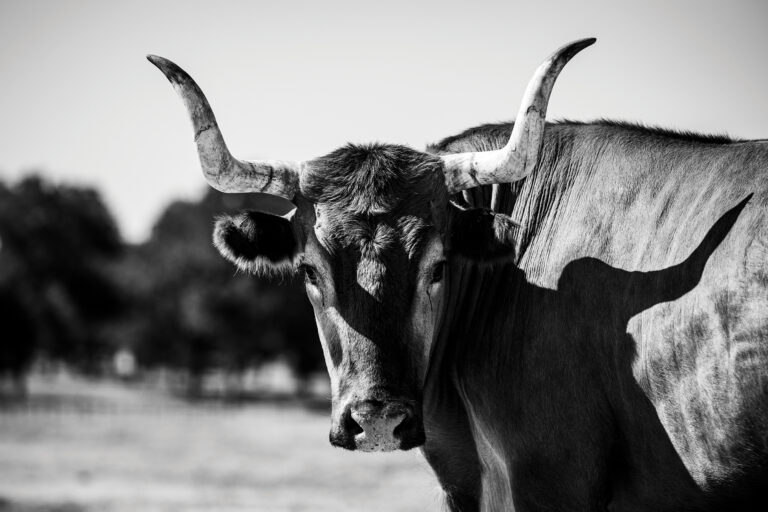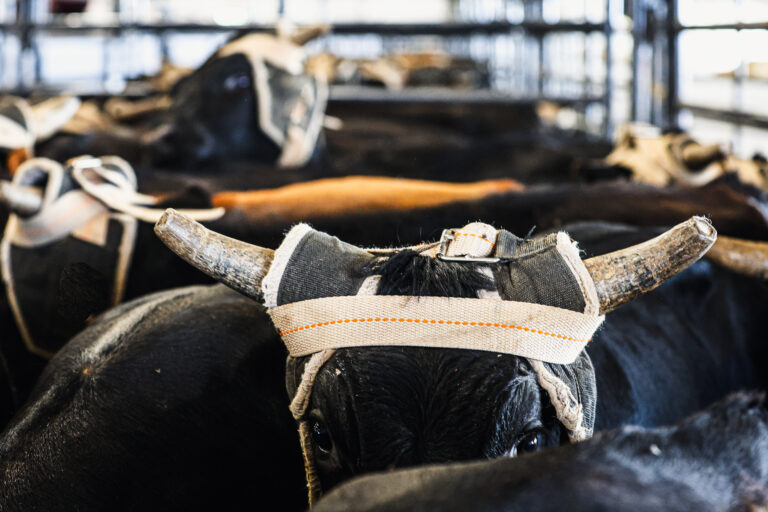There’s really nothing like the creek of the swing of the back gate of an old steel stock trailer as it bangs against the pipe alley it’s backed up to, followed by a few whoops and hollers, and then the clambering of hooved feet as they jump off the trailer into their new surroundings. The steers have arrived.
Forget the groundhog and his silly shadow: for team ropers in most of North America, those sounds are one of the first indications that spring is around the corner. That load of steers is something most ropers look forward to all winter long. Not everyone is lucky enough to have their own arenas and practice cattle, but those who are want to be sure they’re investing wisely each year. With a ready supply of cattle in 2018 across the United States, ropers have a variety of options when considering whether to lease them or buy cattle, what kind to get, and how to feed them long before that first load of steers hits their property.
The Lease Option
The type of cattle on which ropers are looking to practice can help determine whether they should lease or buy. Lease cattle are sometimes bigger and older, but their up-front-cost is preferred by most recreational ropers.
“Leasing cattle, you know what your costs are,” Ty Yost, who keeps about 2,000 head of roping steers at any given time for his Yost Productions, said. “You aren’t hustling three or four head at the sale barn trying to get your money back. You’ll be hurt more at the sale barn than from leasing from a reputable local producer. We’ll constantly lease out cattle and pick up $50 a head a month on the cattle that are just not jackpot quality anymore. Some might go left, duck their heads. We can get a few more dollars a week by practicing on them.”
As ropers begin to price out cattle for lease this spring, the market should be steady between $40 and $60 per head, per month, for older steers who have been roped some, Idaho cattle broker Chris Freed said. Some lease programs are year-long, while others are modified based on the region.
“Leasing seems more popular among ropers,” Freed said. “It always has. They know the up-front cost. It seems like the market has been between $40 to $60 a month with a minimum for four to 12 months. Some people do it different—a lot of the lease cattle are the older cattle that have been roped some. They seem to work better in the lease situation. They aren’t such a high dollar. A lot of people who use the fresh, little cattle will buy those.”
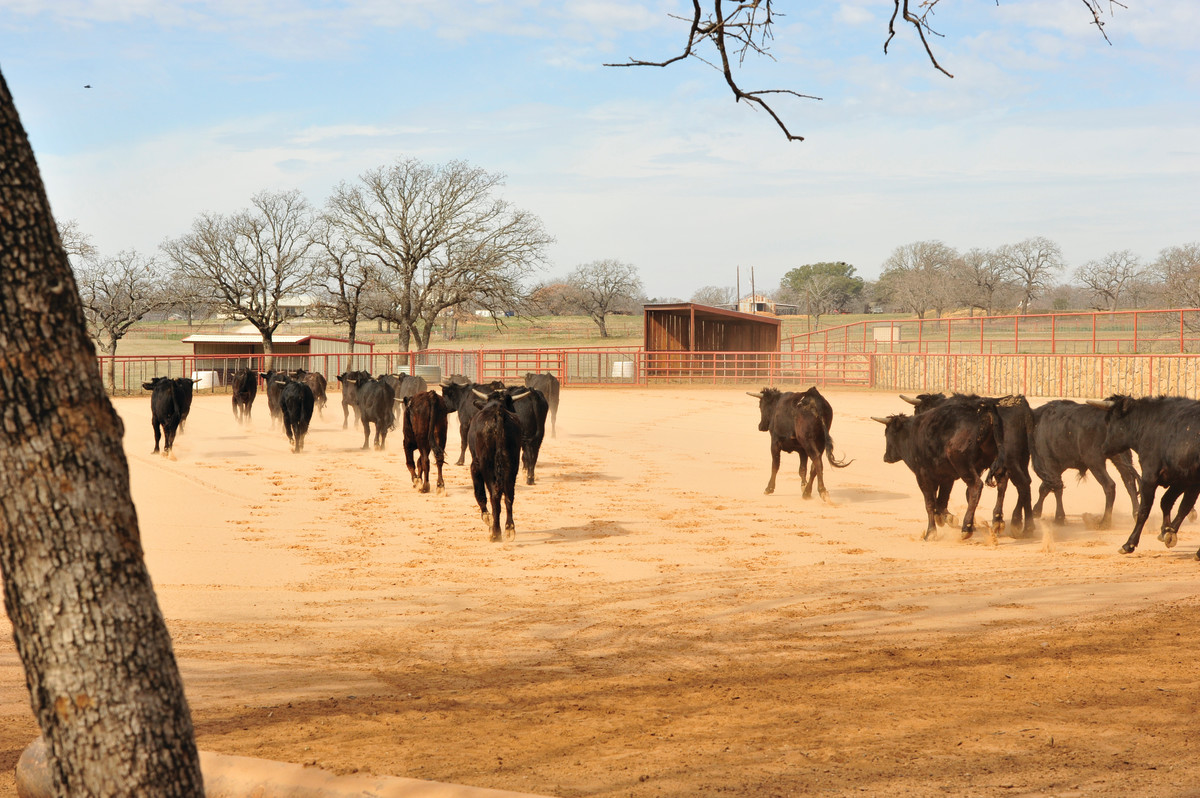
When to lease?
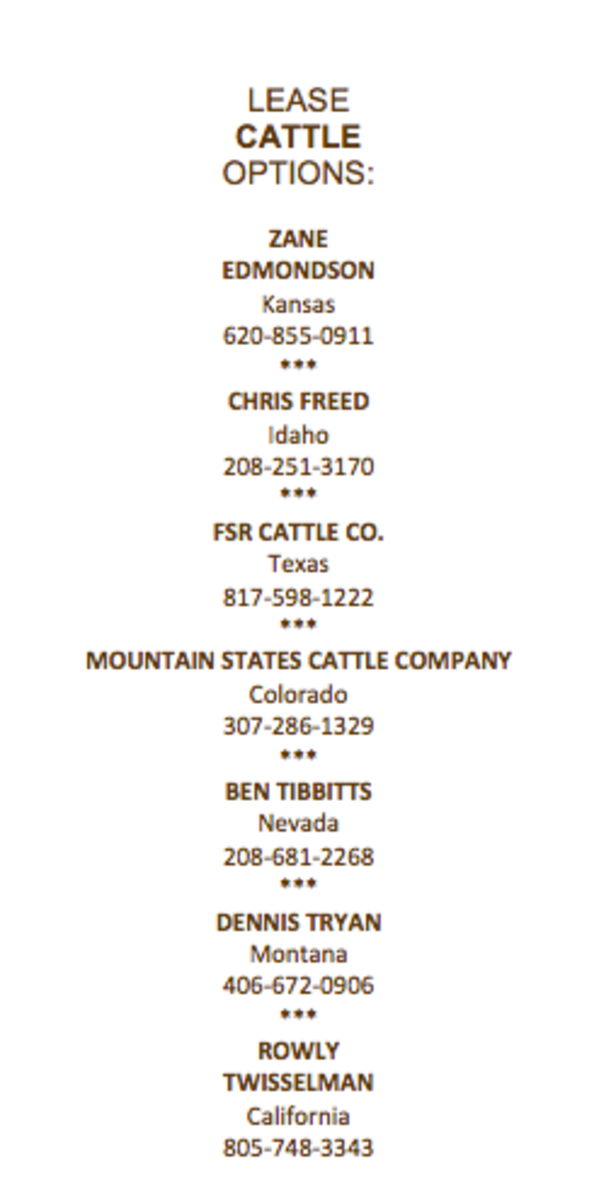
Arizona lease programs often run October through March, while producers in Rocky Mountain states and other northern states have lease programs that run April or May until September. Texas lease programs can run year-round.
In Colorado, Lance Allen’s Mountain States Cattle Company leased about 400 head of cattle last year. He allows ropers to come rope through them before they take them home, or he and his crew will hand pick some for ropers. Allen will also trade ropers out of cattle that aren’t working out—seeing about 10 percent come back on trade before the summer is over, Allen said.
Cattle Buying
If a roper wants to start the summer with freshies—either native or M-branded—they often take the plunge and buy their own set of steers. Roping cattle prices are driven off the cattle market, and when the cattle market goes up, the roping cattle follow—but they don’t come down as fast. When roping cattle prices peaked at about $1,200 in 2015, most ropers opted to lease, but today, brokers are seeing more team ropers buying their own steers than in recent years.
With roping cattle prices steady this year around $650 a head, some choose to try their luck with the sale barn come fall. A steer’s salvage value will only be about $350 to $400 at the sale barn, Yost said, so ropers who want to buy their cattle need to take that into consideration right off the bat.
“Now that they cost $575 to $650, I think you can get your money out of those cattle,” said New Mexico cattle broker Matt Sanchez, who crosses between 6,200 and 8,500 head of M-branded cattle annually. “The resale value, especially as far as heifers, there’s a market that will hold your money together. Salvage value is between $.70 and $.80 a pound on a 600-pound steer. Retail to my large customers—you keep them under a $200 difference. That steer has to make up that $200 running down the arena plus the cost of ownership, for the producers. They lose $200 a head just by owning them. He’s got to make up that $200, make up the cost of owning him plus make a profit. In the producer world, my job as the broker is to make sure my producers have that opportunity—a fighting chance anyway.”
Recreational ropers who buy their own practice cattle should expect to lose more than $200 per head, Sanchez said. That investment can be smart, though, for higher-numbered ropers who are putting their money down at bigger jackpots that rope fresh cattle.
“A higher-end roper, you’d need fresher cattle,” John Philipp, of Philipp Ranch, said. “The ropings you rope in, the cattle are fresher. The lower-numbered guys need cattle broken in, with a pretty good pattern to them.”
While the chance to own fresh cattle is one of the selling points of buying rather than leasing steers, Yost said to consider saving money by buying already-broken-in steers.
“When you buy fresh cattle, you’ll have 5 to 10 percent that are no good from day one. You have a 5-percent savings if you buy ones broken in that you’ve seen go.”
When to Buy?
Steers are often cheaper in January and February, Yost said, but then most ropers have to feed them for a few months before weather allows ropers to put them to good use. In the spring, rodeo stock contractors jump into the market to fill their committees’ needs, and in the fall, the World Series of Team Roping and United States Team Roping Championship look for thousands of good steers for their year-end events, with the forces of supply and demand driving the price up then.
Native or M-Branded?
By the time Mexican cattle make it to U.S. roping pens, they’ve been handled significantly more than many native cattle that are simply gathered, branded, and sent to rope, Sanchez said. Mexican cattle are brought down from the mountains of Northern Chihuahua, branded, TB tested, gathered again, branded again, tested again, and hauled around. Most Mexican cattle, too, are older by the time they cross the border but still small enough to rope, Sanchez said, adding to their desirability.
“Mexican cattle have hard horns,” Sanchez said. “They have white horns with black tips. Their horns are polished just like an elk polishes the tip of its horns. They get polished in the mountains going through brush and trees. Those black tips are their calf tips. That’s indicative of age. They break in better. Their mature horn structure has a denser, developed bone and horn structure, which leads to better handles.”
But because of federal regulations, Mexican cattle can be tougher to get rid of at the sale barn and require more paperwork. Sanchez takes that burden away from most of his larger buyers, though, and trades producers out of their older ropers for fresh cattle.
Native cattle, on the other hand, are easy to send back into the food chain at the sale barn. And when ropers stick with a consistent breeder, their chances of getting a consistent product improve dramatically.
“The native are such a cross selection of breeding programs and geography—they can be inconsistent,” Yost said. “But if you buy from someone like the Philipps, it’s hard to tell a native from an M-branded steer.”
Philipp offers production sales every January, and is looking to possibly do more throughout the year. He’s been meticulous about maintaining the purity of his herd.
“Native corrientes are generally easier to get rid of when you’re done roping them, and the genetics are just as good,” Philipp said. “I think cattle can last a year and a half. We’ve had some cattle we rope for two or three years—for colts and people learning to rope. I think a lot has to do with making sure you break them in right. Keep cattle lasting—they need to be strong. You’ve got to keep them strong or you can ruin them.”
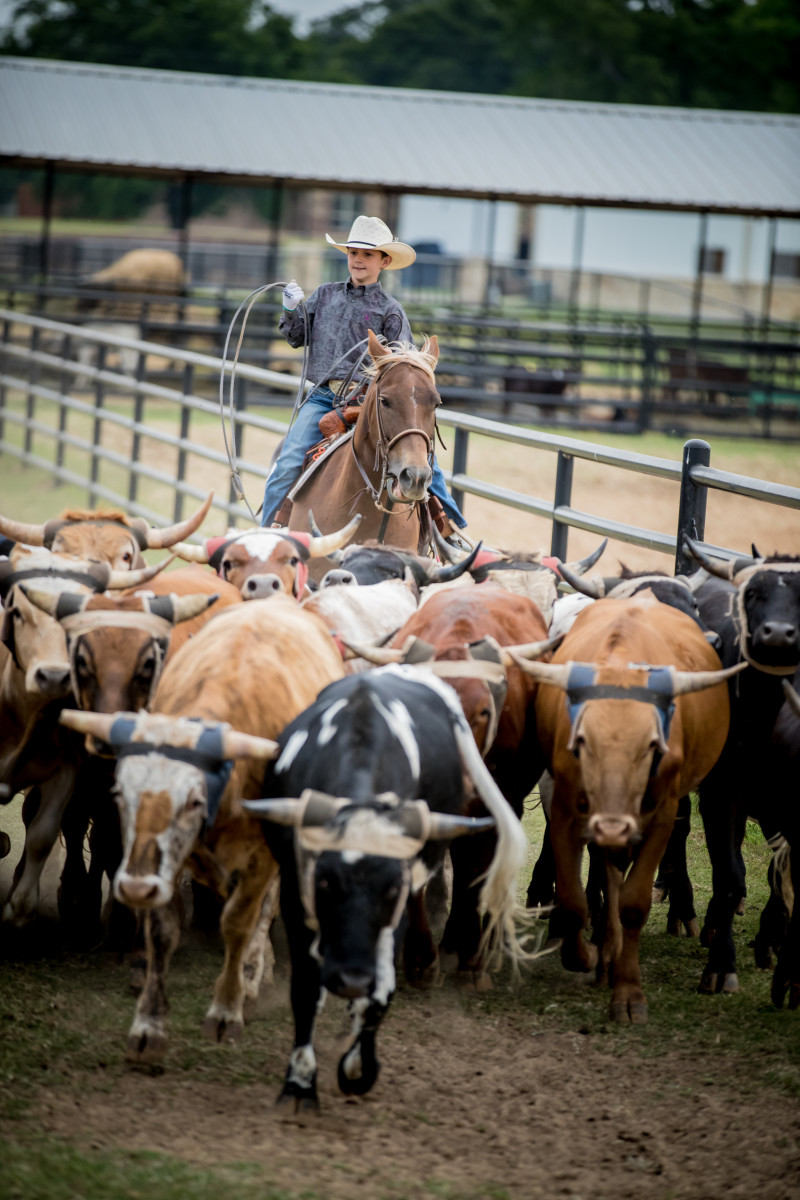
Making the Best of It
Many lease programs, like Allen’s, require steers to come back at the end of the term having gained half a pound per day for the duration of the lease. That shouldn’t be too hard, Allen said, and he’s yet to run into a customer who couldn’t make it happen.
“I’ve yet to have to weigh a set back in,” Allen said. “Half-a-pound a day is normal, everyday living.”
Zane Edmondson, of Dodge City, Kansas, leases out close to 1,200 head of roping cattle annually. He said that half-pound-per day rule should be easy to meet, and that too many ropers don’t give enough consideration into how they feed and care for their steers.
“Everybody thinks they can get by on an old grass bale and a lick tub, but if you want them to last, you better feed them a little better than that,” Edmondson said. “If a guy doesn’t treat them right and they don’t come back in good shape, they don’t get them again next year. Taking the time to put the wraps on and take them off, not dallying on a leg—not dallying on them period. Don’t turn on bad head catches. As long as they’re hitting good you can bump them, but you don’t have to pull back on them every dang time.”
Critical in all of this? Loyalty.
“Get a cattle supplier and stay with them,” Yost said. “I typically lease to the same guys year after year. I don’t like those guys shopping me. Most of the guys I deal with are just good old friends. Find a guy you can deal with every year. The fly-by-night guys, stay with your guy. There’s not a lot of money in it anyway. If you charge less than $50 for a six-month lease, you can’t keep it up for too long.”




